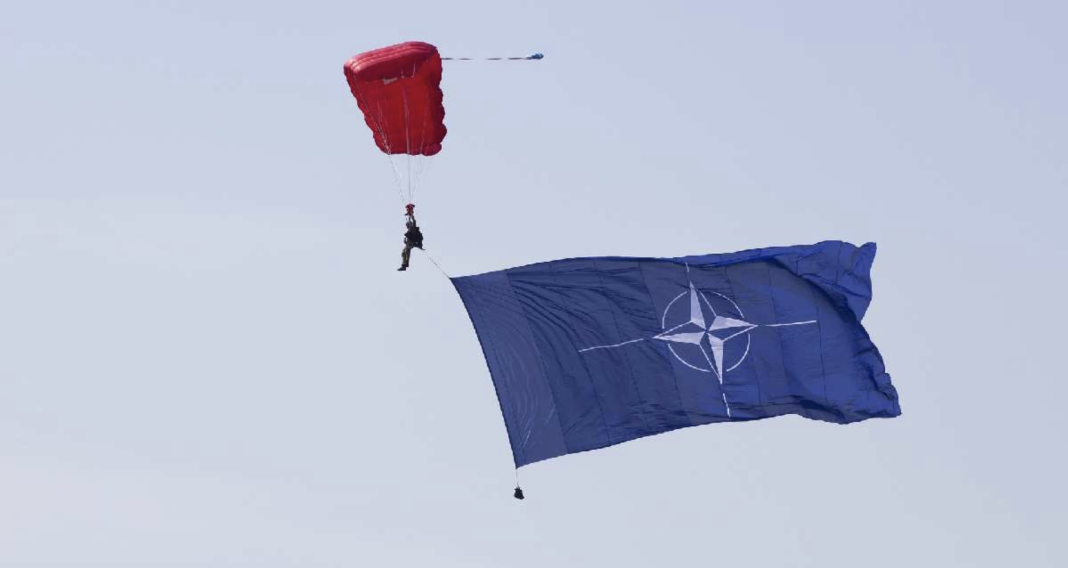by ALIAKSEI KAZHARSKI
On 15–16 October 2021, the new edition of the Riga Conference brought together politicians, decision makers, experts, and academics, once again serving as a regional and European forum, where the most prominent political and security issues are discussed. Have this year’s discussions confirmed that we should now speak of a post-post-Cold War period? What is the future of the NATO alliance in the changing strategic environment and in light of the mounting security challenges?
On October 15–16, 2021, the new edition of the Riga Conference, which annually brings together politicians, decision makers, experts, and academics, once again served as a regional and European forum, where the most prominent political and security issues were discussed. Some of the challenges frequently addressed here were of a specifically regional nature. Thus, the ongoing Eastern European “hybrid” migration crisis was naturally a recurrent theme during both public and “Chatham house Rule” discussions. Many other topics were of an even broader character, with panels dedicated to the EU’s global actorness, and the future of NATO under the forthcoming 2022 Strategic Concept. In the Baltics, the fate of the alliance is a topic that naturally breeds “existential” interest, due to these member-states’ history and geographical situation, and all the more so in light of the more recent developments in the area.
In this context, much was said about the “post-Cold War” security environment. Time, indeed, flies quickly. On April 4, 2019 NATO celebrated its 70th anniversary. It is interesting to note that out of those seventy years, only four decades belong to the Cold War period, and by now NATO is thirty-two years into its next phase. Perhaps, one could argue that we should speak of something like a post-post-Cold War period, though analysts may disagree as to when that started. Was it in 2001, in 2014 or perhaps even in 2020, with the outbreak of the COVID-19 pandemic?
In any case, this “post-post” environment is shaped by new challenges and old/new actors. This includes not only the rise of China per se, whose implications have been long debated by the “liberal” and “realist” camps of IR scholars. What is particularly worrisome is the apparent cementing of a personalist regime in Beijing and a departure from the previous political practice of changing rulers at least every once in a while. This is accompanied by an increasingly assertive foreign policy stance, and active projection of “sharp power” abroad. Most recently, this has included the use of the so-called “health” or “vaccine diplomacy” in an attempt to mitigate the reputational damage brought by the global pandemic.
Russia, who has also engaged in vaccine diplomacy, has been moving in a similar direction, though its original post-Cold War point of departure was very different. After more than two decades of Vladimir Putin in power (into which the nominal Medvedev presidency should also be included) we are witnessing mounting political repression in Russia. At this point, it is safe to say that the country is no longer a “hybrid” regime but a full-fledged authoritarian one, now quickly moving in the direction of a police state. The prognosis here looks far from optimistic. Starting from his early years in office Putin has used siege mentality to solidify his power, and the so-called “Crimea effect” helped him boost his domestic popularity once. Recently, Moscow’s menacing moves at the Russo-Ukrainian border may suggest that the Kremlin is playing a game of chicken and hopes to intimidate not just Ukraine but the West into recognizing what it sees as its “legitimate interests” in Eastern Europe and into accepting some kind of a new settlement, a new European order, built on specifically Russian terms.
Finally, the number of perceived threats has proliferated in this new environment. As the founding fathers of the Copenhagen critical security studies school once pointed out, “security” became a concept that was much stretched – and even overstretched. Following the end of the Cold War, Western security institutions like NATO managed to reinvent themselves, broadening their functional scope to “crisis management” and out-of-area operations. They have developed a much broader notion of security, into which many things were included. Sometimes, perhaps, one too many as one of the renowned experts at the 2021 Riga Conference argued, commenting on NATO’s involvement with the climate change agenda. Managing capability planning and then getting the alliance members to consistently fulfill their commitments looks like a mind-boggling riddle, especially as compared to the Cold War times with its central objective of territorial defense and deterrence, managing which was also often far from easy.
This new and changing strategic environment is combined with the old and well-known problems that go back to the origins of the Euro-Atlantic security cooperation and sometimes seem to be hard-wired into the Western alliance. NATO, for instance, has always been (predominantly) an alliance of democratic states, wherein lie some of its major strengths and weaknesses. On the one hand, there are good reasons to believe that alliances of democratic states are more robust. Despite the regular “family fights” and occasional divergence of interests, democratic political culture and the domestic system of checks and balances typically lead their members towards exercising restraint and repairing their relations even after major internal crises. Thus, the public discourse of a NATO that is “in crisis” and is “about to fall apart” is, in fact, not much older than NATO itself. Yet, the apocalyptic scenario just never seems to materialize. Instead, this fate befell NATO’s primary rival, the Warsaw Pact bloc, which was, at times, perceived as a much more effective war-fighting tool because of the superior ability of totalitarian states to extract resources and to mobilize their populations. However, the Pact collapsed simultaneously with the implosion of the USSR. NATO, on the other hand, managed to outlive its original purpose, to adapt, and even to expand. Hence, every new round of alarmism should probably be taken with a grain of salt.
On the other hand, the democratic nature of the alliance certainly brings additional costs into the equation. Family quarrels can be more frequent and visible, which also contributes to the recurrent “NATO in crisis” narrative. Collective action becomes more difficult, as reconciling multiple interests is a cumbersome process, which can sometimes result in “the lowest common denominator” solutions. Sometimes, they say, NATO stands for No Action, Talk Only.
Furthermore, domestic electoral cycles and the resulting necessity to reconcile defense spending with other domestic agendas breed a constant temptation to introduce cuts and quietly renege on existing commitments. Like the crisis narrative, the burden-sharing problem seems to be as old as the alliance itself. At the origins of NATO stood the US, which emerged out of WW2 as the victorious superpower, and the (former) European great powers, who were humbled, diminished, and economically ruined. The US perceived stability in Europe as its key strategic interest and was willing to invest big time. However, it was also very much in favor of Europeans (gradually) taking a greater responsibility for their security and therefore goaded them repeatedly in that direction. “We cannot continue to pay for the military protection of Europe while the NATO states are not paying their fare share and living off the ‘fat of the land.’ We have been very generous to Europe and it is now time to look out for ourselves,” declared President John F. Kennedy in his remarks to the National Security Council Meeting in 1963. When, in 2016, President Donald Trump said that NATO was “economically unfair” to the United States, because it was “paying too much” it seemed like not much had changed more than fifty years on.
Yet, the burden sharing debate has also had many facets. The famous 2% benchmark, which had originally been a guideline for new alliance members, has been criticized for being too superficial and not taking into account the multiple ways in which contributions could be made, and the variety of costs and risks and how those could be distributed among member-states. Thus, as some argue, participating in out-of-area missions and being exposed to high fatality rates could in itself be considered a cost for democratic states with their independent and sensitive public opinions and low levels of casualty tolerance. Yet, this is a cost that one can hardly measure in dollars. The efficacy of output (as opposed to the quantitively measured input) has also been questioned. As experts have pointed out, some countries, for example Greece and Turkey, have, in the past, boosted their defense spending, but did so for reasons that obviously had little to do with the stated needs of the alliance.
It seems, after all, that the burden sharing debate and the recurrent “crisis” narrative are here to stay, and the sense of crisis might even be aggravated by the economic and political aftermath of the pandemic, which we are yet to assess in full scope. Yet, there is also ground for optimism, as the Western alliance has, indeed, endured for a very long time, and is known to have muddled through many dramatic periods. At the moment, the key question for policy experts, which was also debated in depth at the recent 2021 Riga Conference, seems to be that of the forthcoming NATO Strategic Concept, to be adopted at the 2022 Madrid Summit, and whether this document will indeed live up to the expectations shaped by the changing strategic environment and the mounting security challenges.
Aliaksei Kazharski is researcher and lecturer at the Institute of European Studies and International Relations of the Comenius University in Bratislava and at the Department of Security Studies of Charles University in Prague and Visegrad Insight Fellow.
You can also read: “Democracies: “Sovereign” and “Illiberal”: The Russian-Hungarian game of adjectives and its implications for regional security”, by Aliaksei Kazharski and Silvia Macalová (in Journal of Regional Security 15 (2): 235–262).
Photo credit: Pixabay







